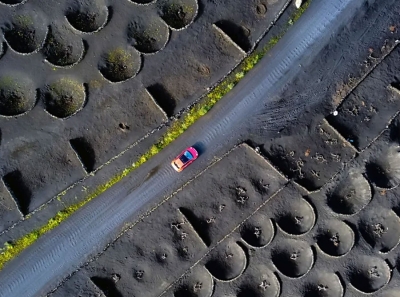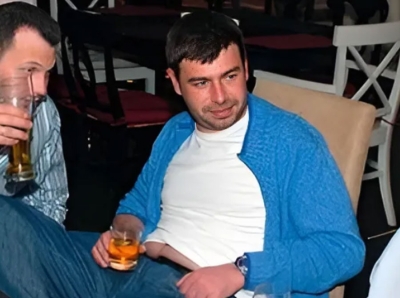Series: Uprooted: Virginia Universities Have Expanded by Dislodging Black Communities
In the second half of the 20th century, the establishment and expansion of public universities across Virginia uprooted Black families, hindering their efforts to accumulate wealth in the most American way — homeownership.
This article was produced for ProPublica’s Local Reporting Network in partnership with the Virginia Center for Investigative Journalism at WHRO. Sign up for Dispatches to get stories like this one as soon as they are published.
The city of Newport News, Virginia, and Christopher Newport University are creating a joint task force to reexamine the destruction of a Black neighborhood to make way for the school’s campus starting in the 1960s, and recommend possible redress for uprooted families.
The new commission, announced Monday, will scrutinize four decades of the school’s property acquisitions, probing the decisions that led to locating and expanding its campus in the midst of a once-thriving Black community. It will also contact families displaced by Christopher Newport’s steady growth to ask what “restorative justice” would mean for them, and seek state assistance with potential relief for victims, according to a draft action plan.
The formation of the task force follows publication of a series by the Virginia Center for Investigative Journalism at WHRO and ProPublica, which revealed that Christopher Newport and other Virginia state universities grew by decimating thriving Black communities. It also documented race-based decision-making by the City Council by locating the school in a Black neighborhood despite having cheaper options and by seizing properties by eminent domain. CNU’s expansion has whittled down the Shoe Lane neighborhood in Newport News to just five houses.
In their announcement, Newport News Mayor Phillip Jones and Christopher Newport University President Bill Kelly said that the task force’s goals are to develop a “comprehensive understanding” of historical events and to ensure that residents are treated better in the future. “Understanding and acknowledging our past is important to moving forward in a transparent and thoughtful way. Christopher Newport is committed to this work,” Kelly said.
“I was deeply disturbed to know that this happened in our community,” Jones said. “I feel a personal obligation to ensure the city speaks to its role in displacing families and disrupting the sense of community in this historic area.”
The city will align itself with CNU’s plan to boost Black enrollment, according to the draft action plan obtained by VCIJ and ProPublica. Black people make up 44% of Newport News residents but only 8% of Christopher Newport students, down from 17% in 1996, VCIJ and ProPublica reported.
The announcement marks the latest and one of the broadest efforts in the country by a university and its host city to revisit their role in urban renewal and the disruption of once-stable Black communities. City and school reexamination of the historic displacement of marginalized communities has led to greater recognition of the plight of former residents near the University of Colorado Denver and the University of Georgia in Athens. The Denver university has also established a scholarship fund for descendants of families in the displaced Aurorian community.
Besides municipal and university action, the VCIJ-ProPublica series has also stirred a state legislative response. Delegate Delores McQuinn introduced legislation this month to create a commission to study how Virginia public colleges have uprooted Black communities and to explore routes of redress.
The first phase of the Newport News and CNU review will examine property records and assessments from 1958 to 1997 to determine whether property owners were properly paid for their land. The task force will also review city and university records, family archives and church documents to identify displaced families and calculate potential compensation, according to the draft action plan.
Additionally, the working group will survey affected families and consult with historians, lawyers and restorative justice experts. The task force will also suggest changes to the city’s policy for using eminent domain to seize properties.
The city has not released details about how many members would be appointed to the task force, when it would be expected to conclude its work or when findings would be released.
Newport News Vice Mayor Curtis Bethany and CNU Provost Quentin Kidd will co-chair the task force, which is expected to include representatives of the city, the university administration, alumni, students and the community, according to the action plan.
The ProPublica series detailed how universities have taken advantage of federal funding and court rulings to displace tens of thousands of families of color. A 1959 amendment to the Federal Housing Act gave colleges generous subsidies to join with cities to expand into stable neighborhoods, often by using eminent domain. While these efforts were promoted as ways to revitalize deteriorating neighborhoods, they frequently resulted in the destruction of Black middle-class communities. Christopher Newport and other Virginia state universities grew at the expense of Black neighborhoods.
Following the first story in the series, Kelly acknowledged in a message to faculty and staff that the university’s progress “has come at a human cost, and we must continue to learn about and understand our complicated history.”
Kelly also shared the series and a related documentary film with students, faculty and staff, and CNU hosted a panel discussion in November on its history. There, before an overflow crowd, panelists and audience members lashed out at the university. “A school that’s built on land that was taken from Black Americans should be more diverse,” said panelist Audrey Perry Williams, president of the Hampton Roads Association for the Study of African American Life and History.
Another panelist, professor Johnny Finn, chair of the Christopher Newport sociology department, floated the idea of reparations for affected families. “I think we need to think about materially, in addition to the symbolic and the representational, how we deal with this,” Finn said.
In 2019, Christopher Newport implemented the Community Captains program, designed to prepare students from Newport News high schools to enter the university and increase enrollment of Black students. Other Virginia universities have taken steps to rectify the historical displacement of marginalized communities caused by their campus expansions. Beginning in the 1960s, Old Dominion University in Norfolk, Virginia, took over part of the predominantly Black Lambert’s Point neighborhood. ODU has since worked to improve relations with remaining residents by increasing enrollment of students of color and awarding scholarships to residents of Lambert’s Point and nearby areas. The University of Virginia, which also dislodged Black residents, appointed two executive commissions to study its historical support for racist policies and has set a goal to create affordable housing for Charlottesville residents on university-owned properties.
Around 1960, the area bounded by Shoe Lane and three other streets was a growing Black middle-class neighborhood. Residents included teachers, dentists, a high school principal and a NASA engineer, and there were plans to develop farmland for additional housing. But an all-white Newport News City Council blocked those plans by seizing the core of the community in 1961 to establish a college. A former Christopher Newport University president said he was told that the goal was to “erase the Black spot,” in part because the area was near an all-white country club where city and business leaders gathered. The city paid the homeowners 20% less for the properties than the value set by an independent appraiser, council records show.
Even after the 1960s seizure, Black families continued to live around the perimeter of the college. However, Christopher Newport kept expanding. Between 1987 and 2019, it acquired at least 70 properties in the Shoe Lane area, according to an analysis of real estate records. Contending that the university’s expansion hurt their property values, because no one else would want to buy the property, homeowners unsuccessfully sued the university in federal court in 1989.
Paul Trible, CNU’s president from 1996 to 2022, said publicly he wouldn’t need to invoke eminent domain. But his administration used it as leverage to force at least one homeowner to sell in 2005, records show. That same year, the school’s governing board approved its use for three other properties that Christopher Newport said it ultimately acquired without resorting to eminent domain.
Dwayne Johnson, who grew up on Shoe Lane, urged the task force not only to compensate families for underpayments and loss of property value but also to pay them punitive damages. Johnson’s great-grandfather purchased 30 acres of land on Shoe Lane in the early 1900s.
“Do we want reparations? That would be nice,” Johnson said. “But do we think it will be meaningful in that it actually is reflective of our losses? I don’t know.”























